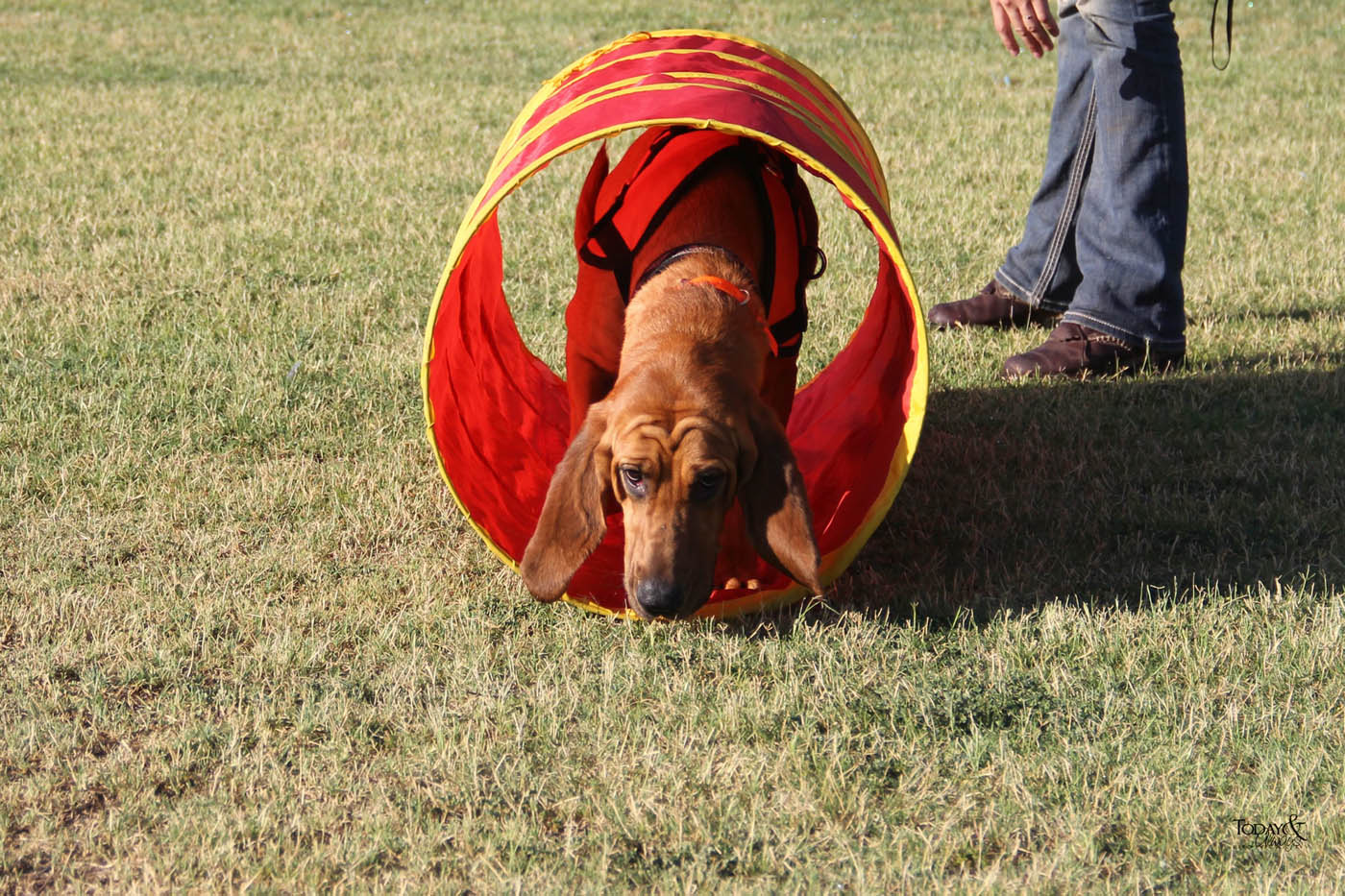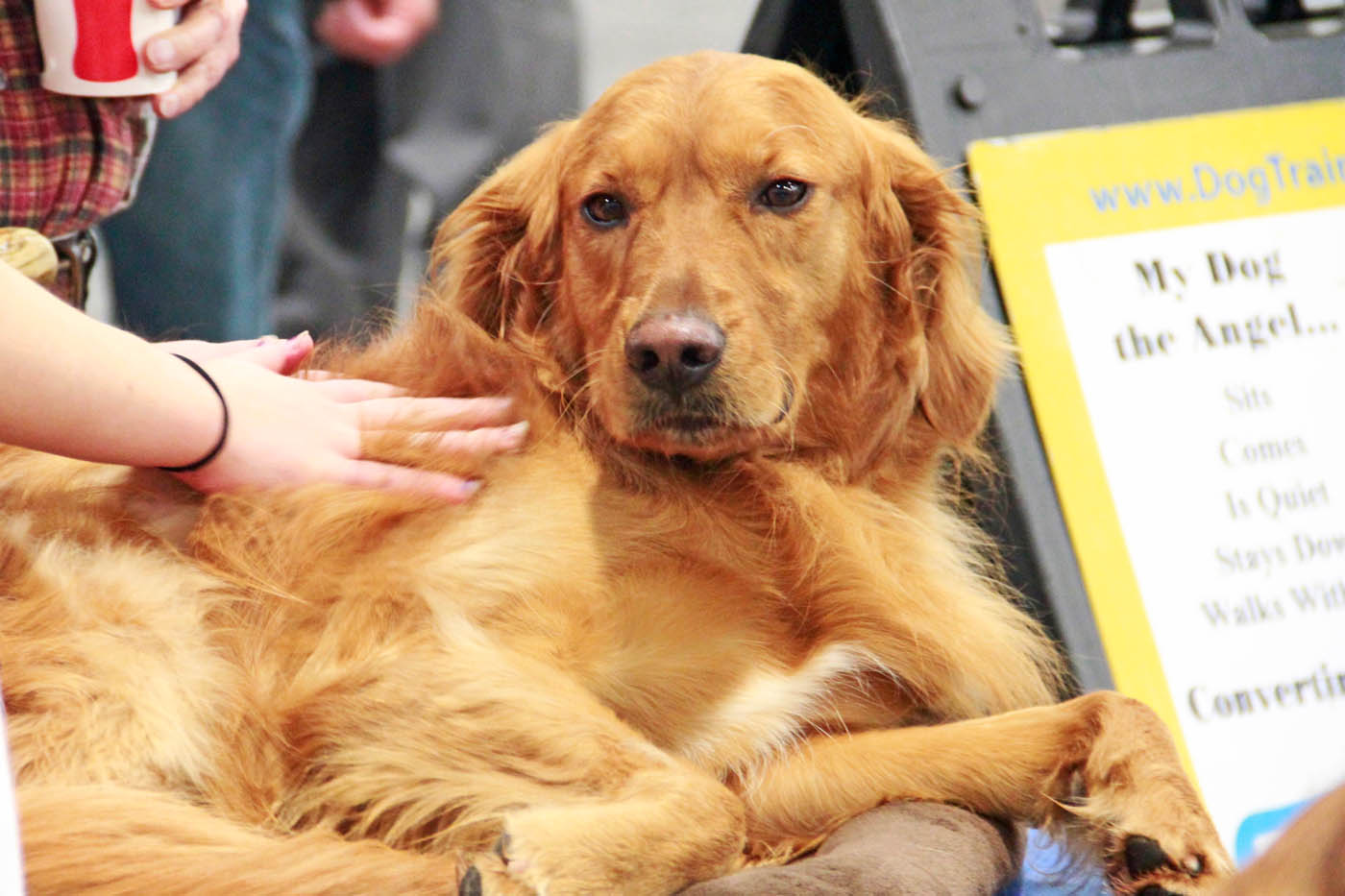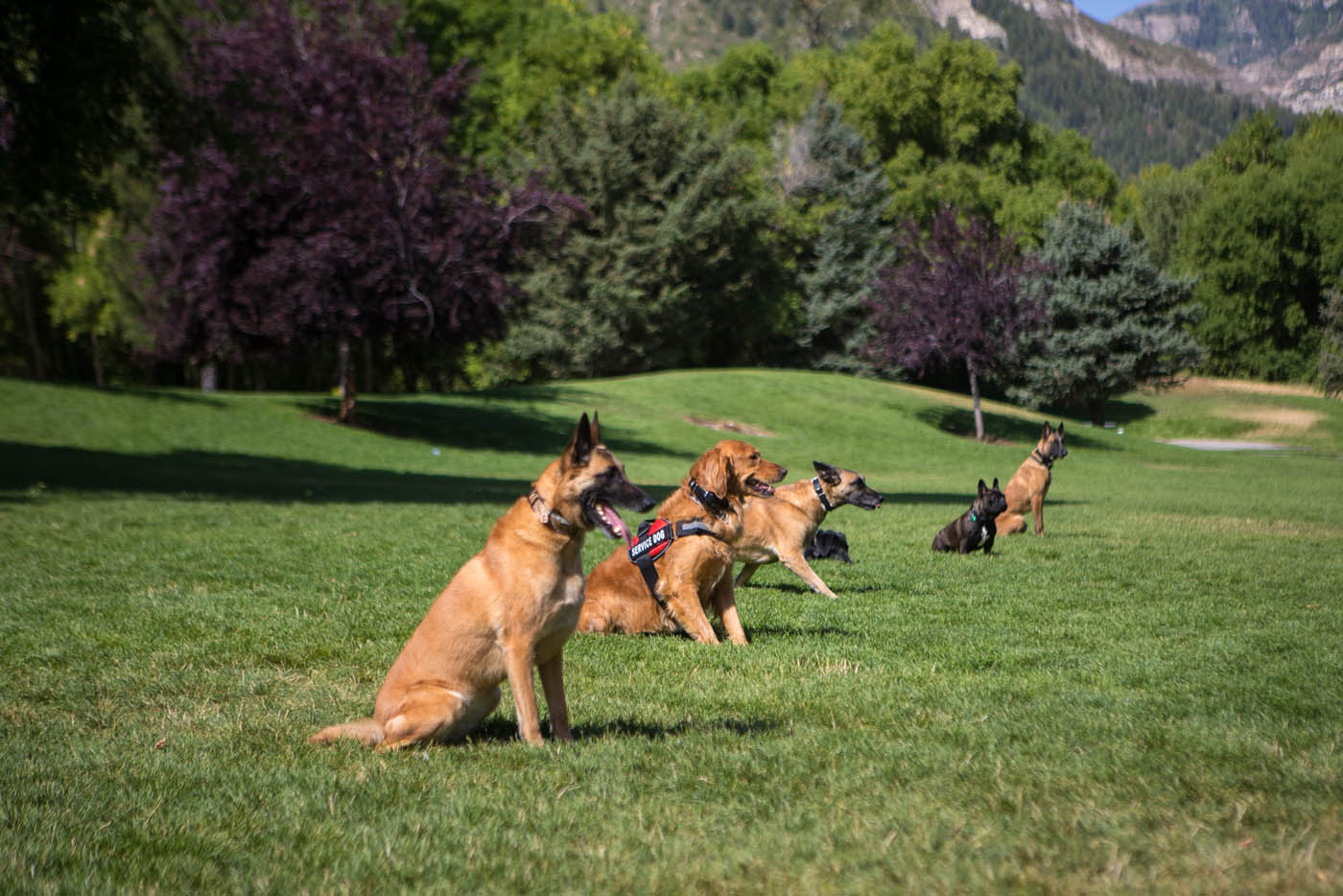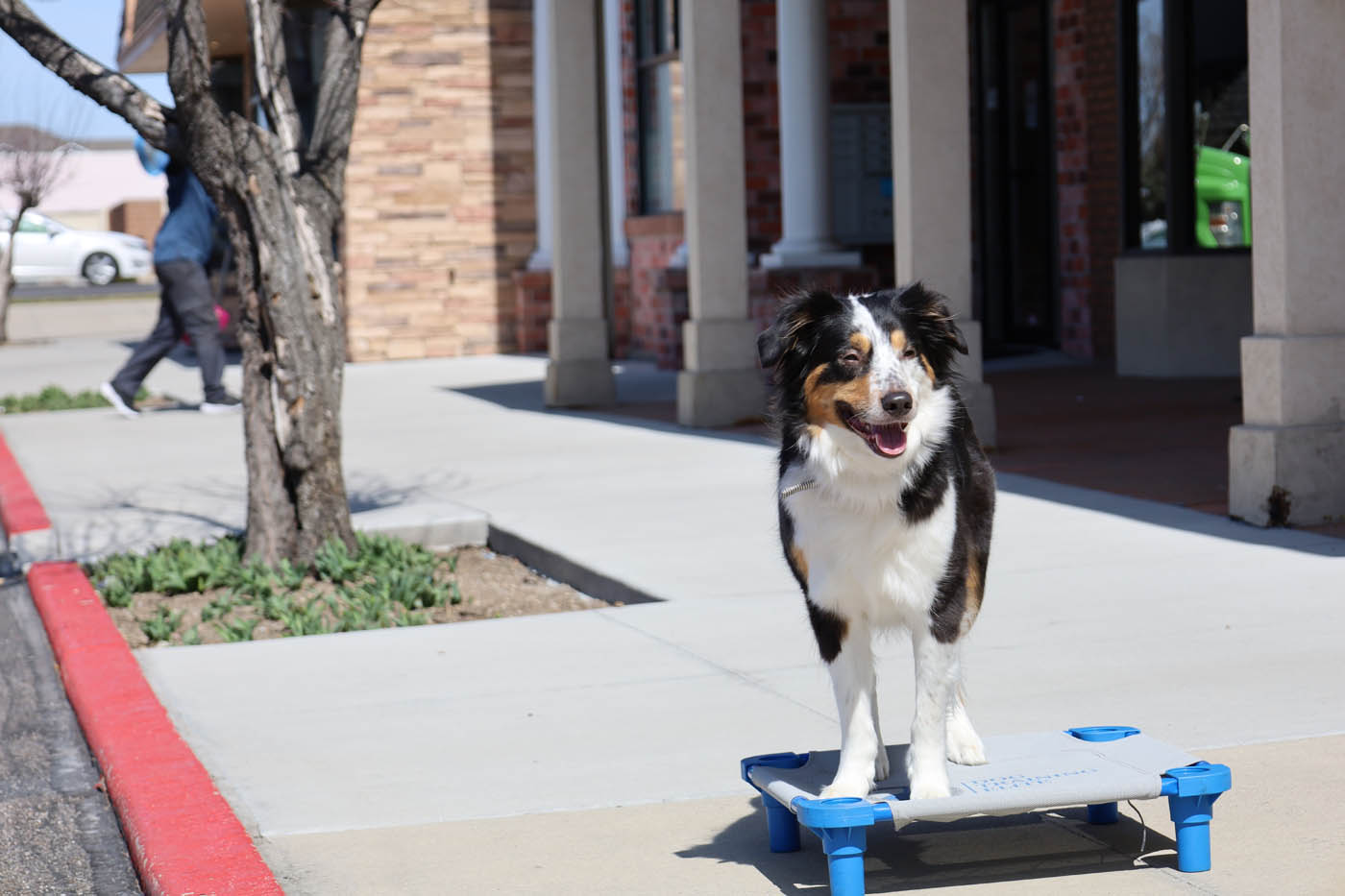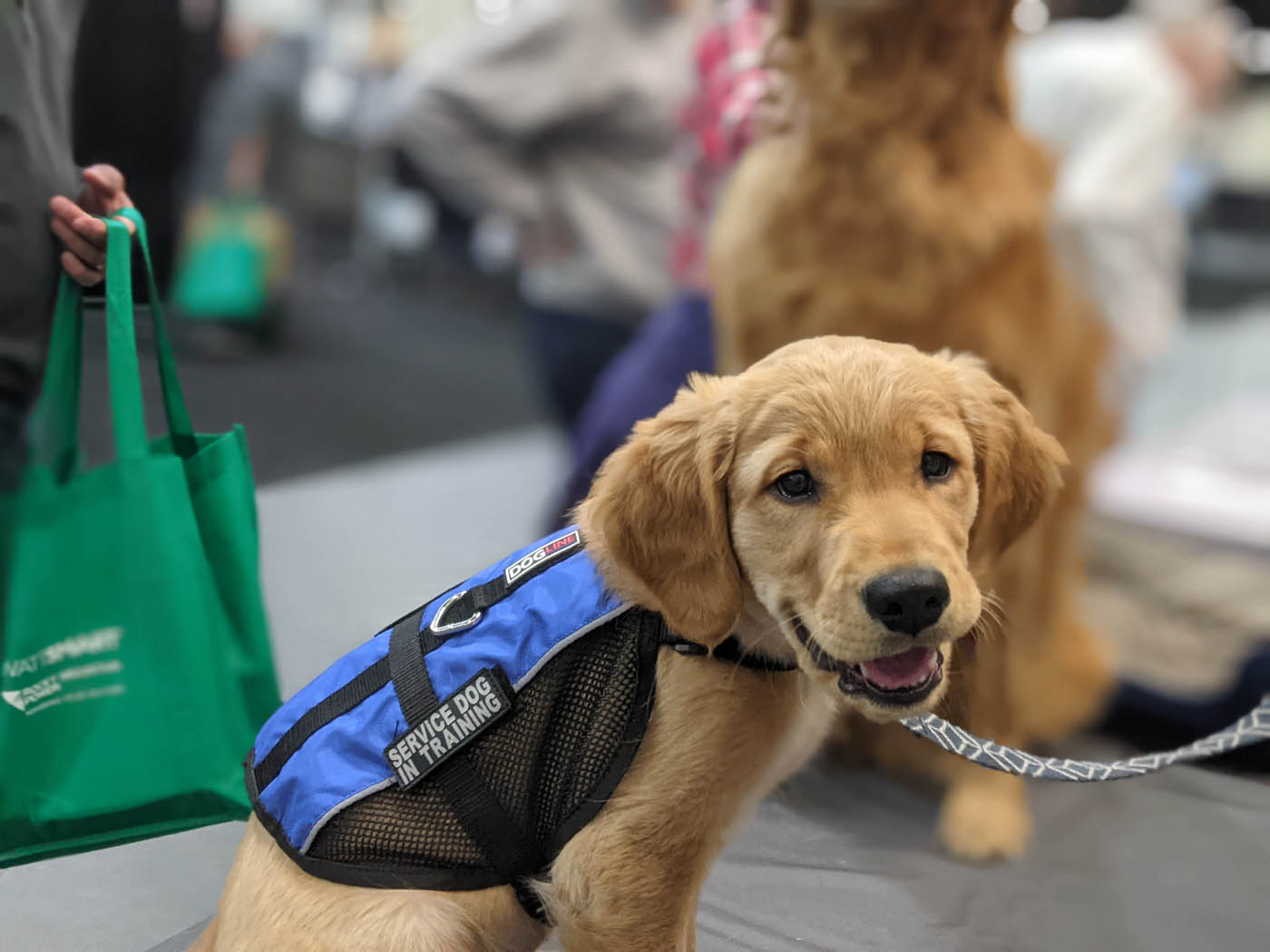PTSD Service Dog Training in San Antonio, TX
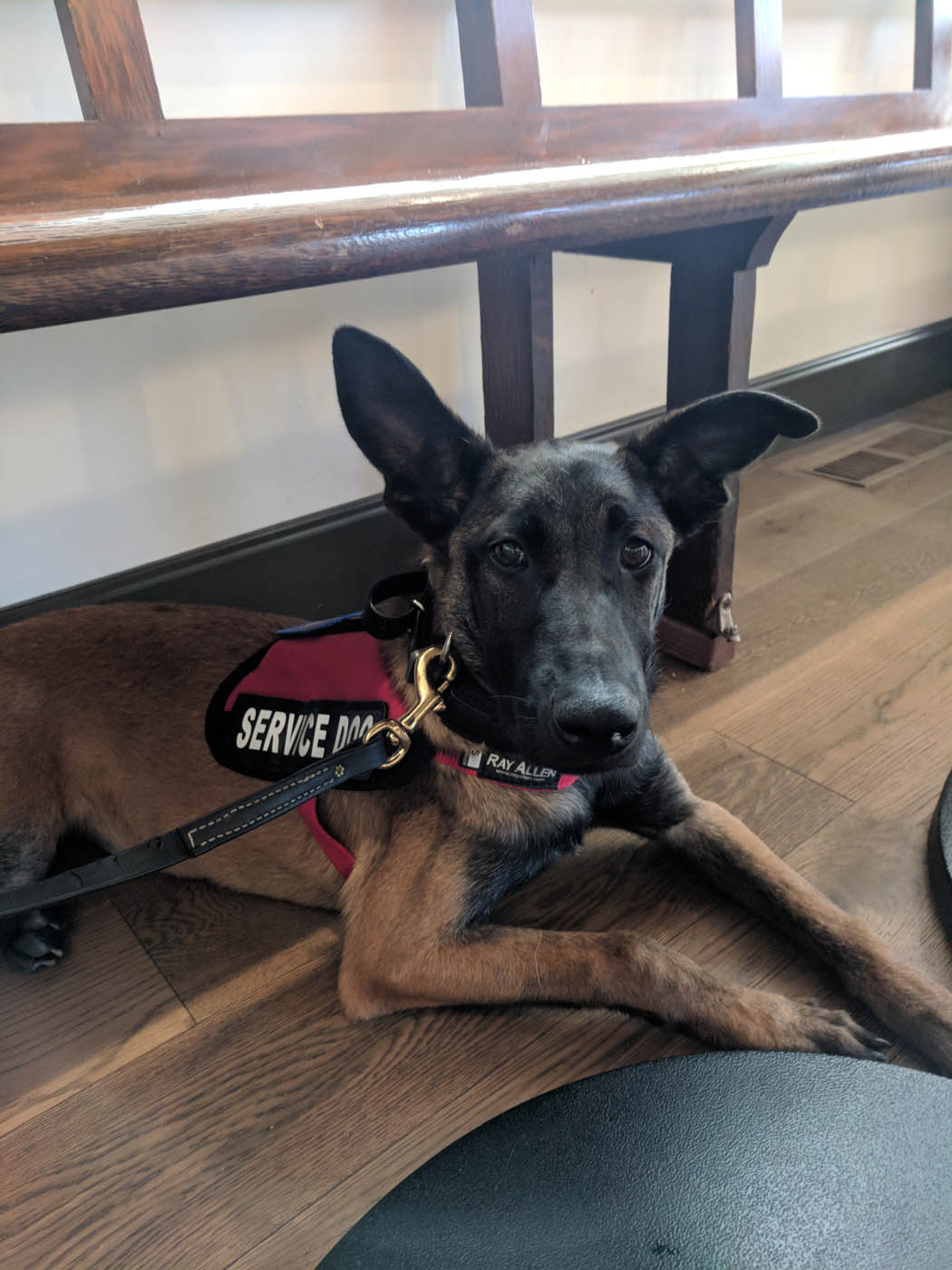
PTSD Service Dog Training in San Antonio, TX
DTE: Top PTSD Dog Trainers
A psychiatric or PTSD service dog in San Antonio, TX provides invaluable support to individuals experiencing high anxiety, stress, or trauma-related symptoms. These service animals accompany their handler everywhere, offering emotional support and helping them reintegrate into society.
Through our specialized PTSD service dog training program at Dog Training Elite, dogs are taught to assist in reducing depression, decreasing the frequency and severity of flashbacks, anchoring their handler to the present, and helping minimize suicidal thoughts.
See Training Packages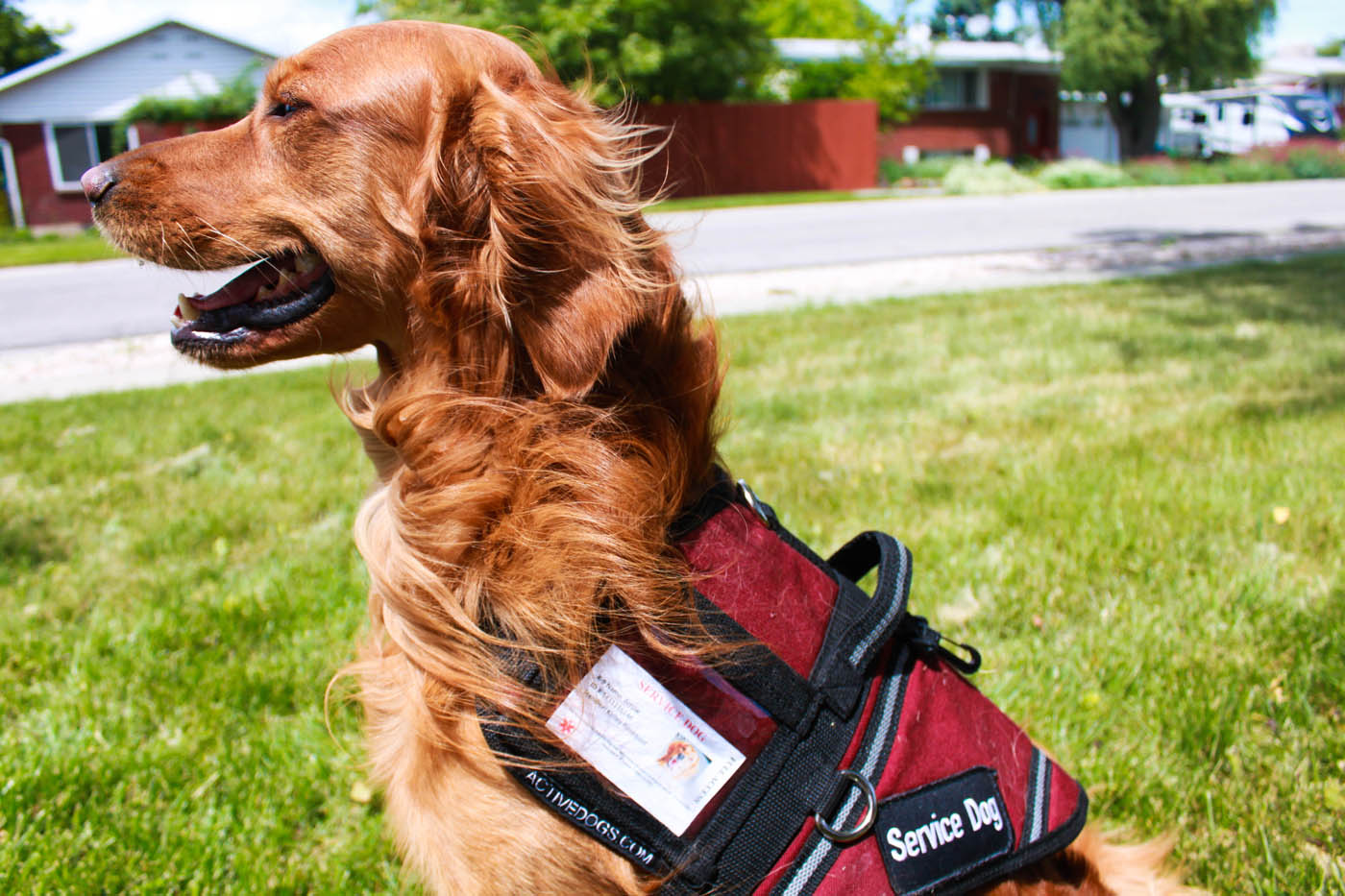
PTSD Service Dog Training in San Antonio, TX
How PTSD Service Dogs Help in Public Settings
For individuals with PTSD, public settings can feel unsafe and overwhelming. Service dogs for PTSD provide grounding and protection, preventing people from crowding their handler and offering emotional support during moments of heightened anxiety.
Service dogs can also be trained to recognize signs of an impending panic attack, wake individuals from night terrors, and regulate emotional responses by applying pressure, helping their handler regain a sense of calm and control.
Our Service Dog Training Programs
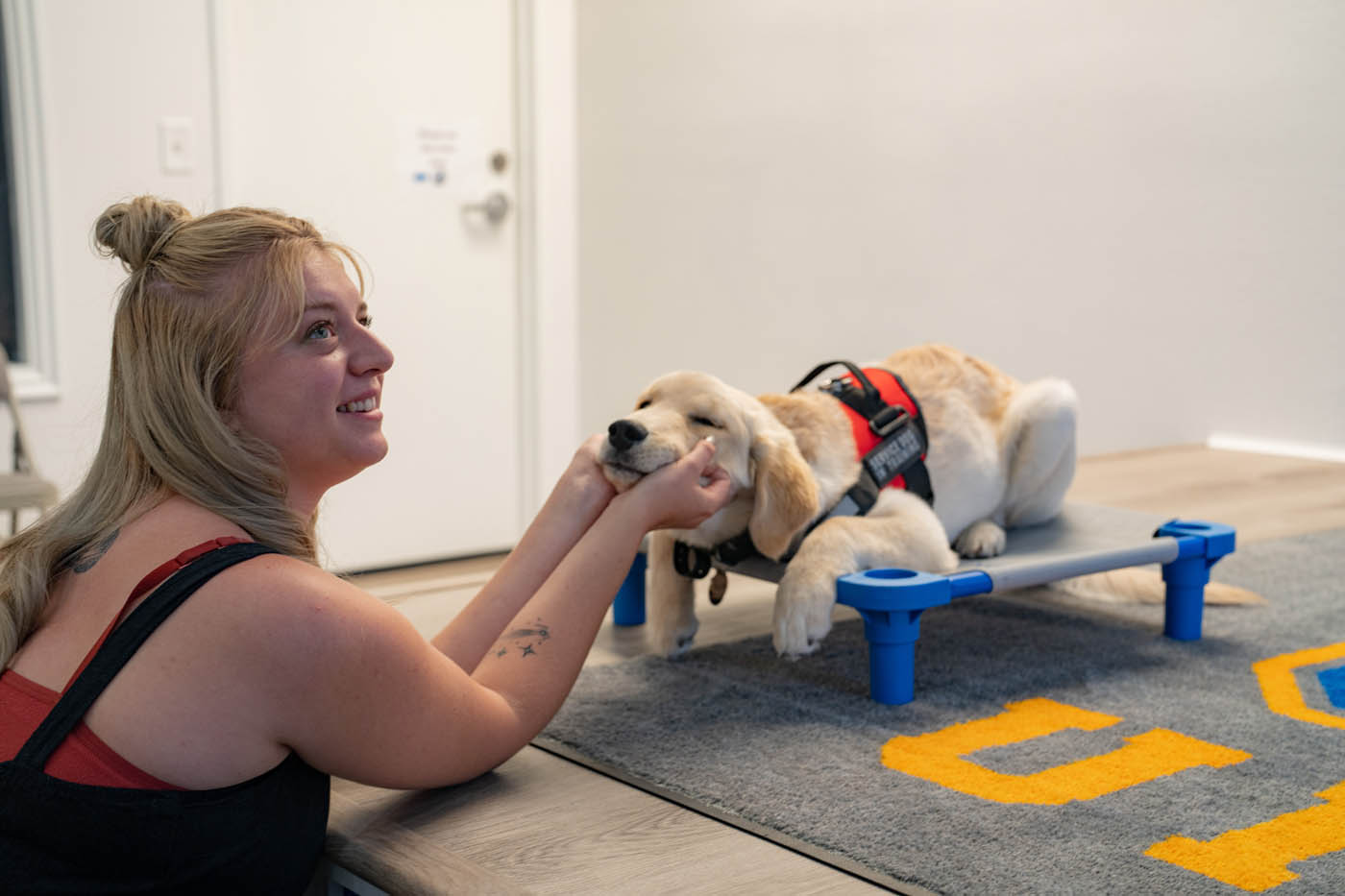
Psychiatric Service Dog Training
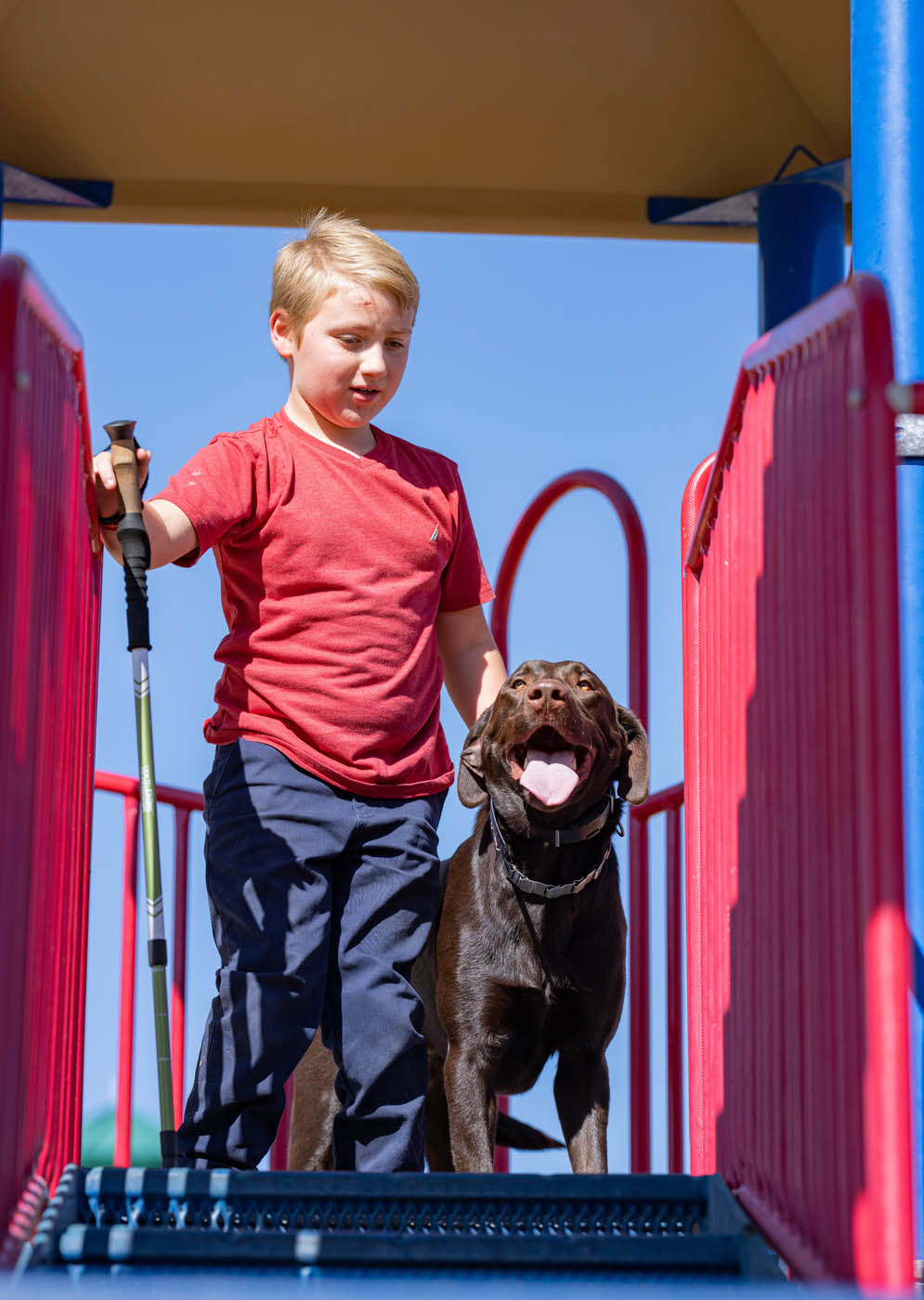
Mobility Support Service Dog
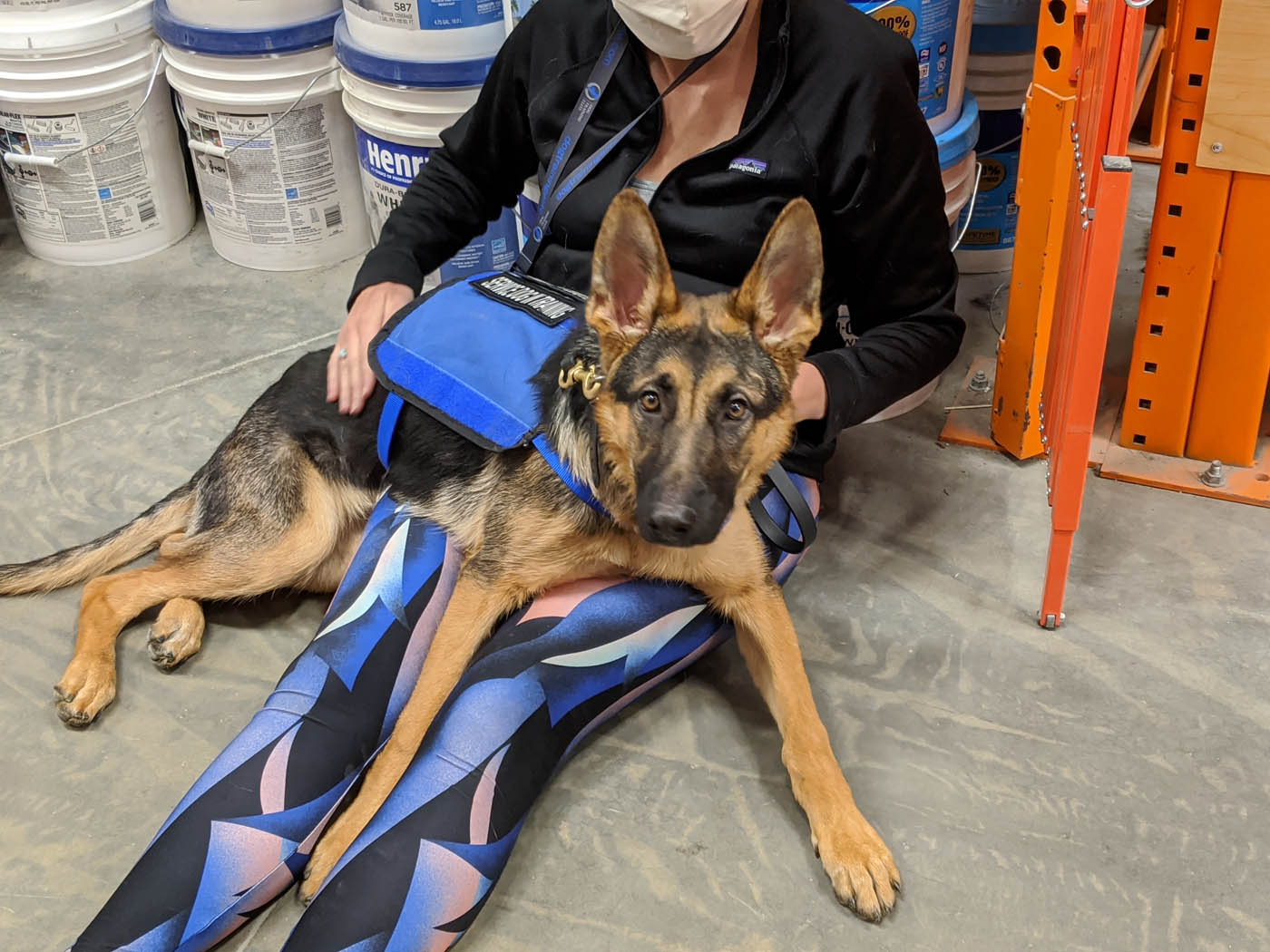
Medical Response Dog Training
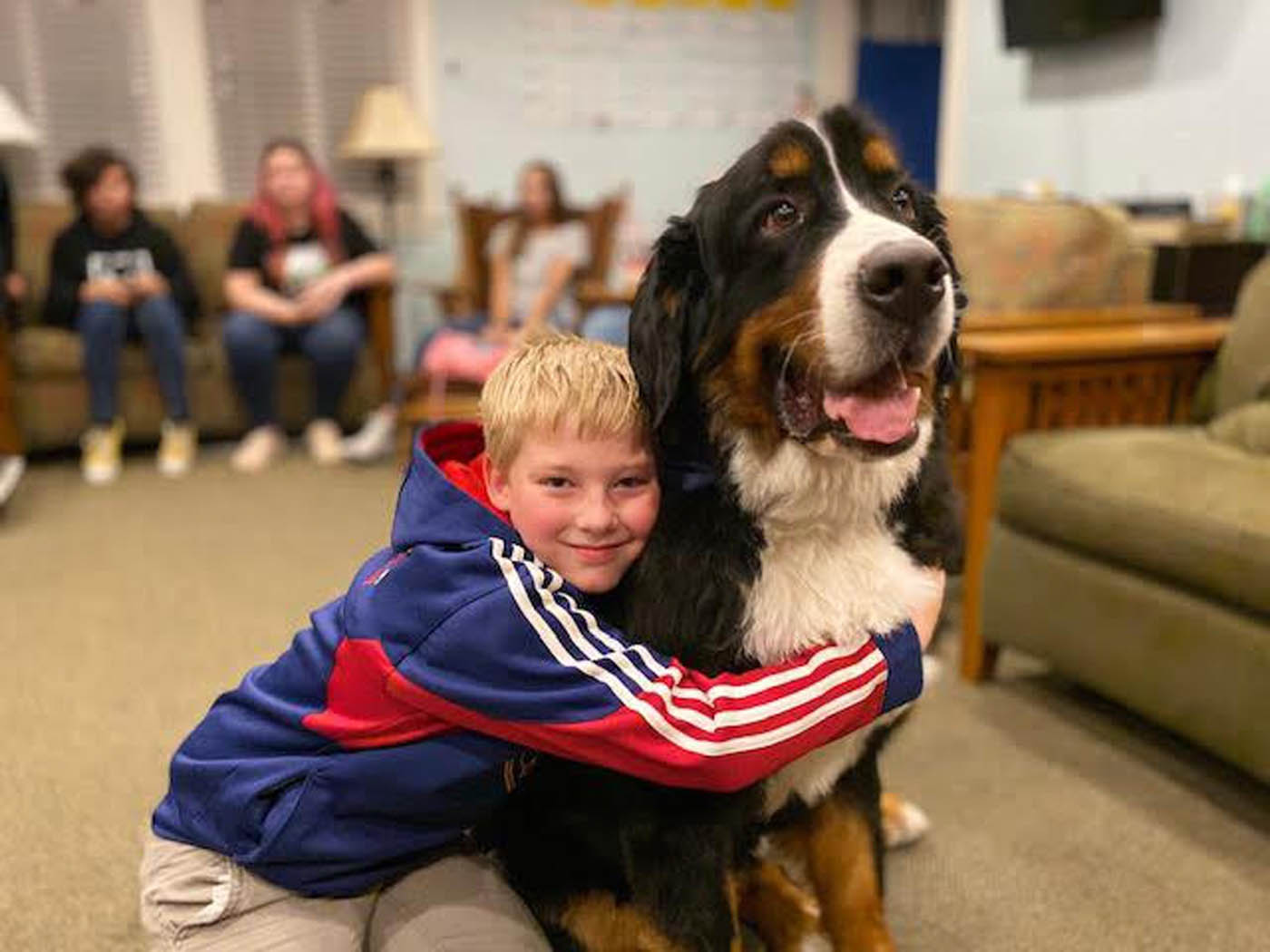
Autism Support Service Dog
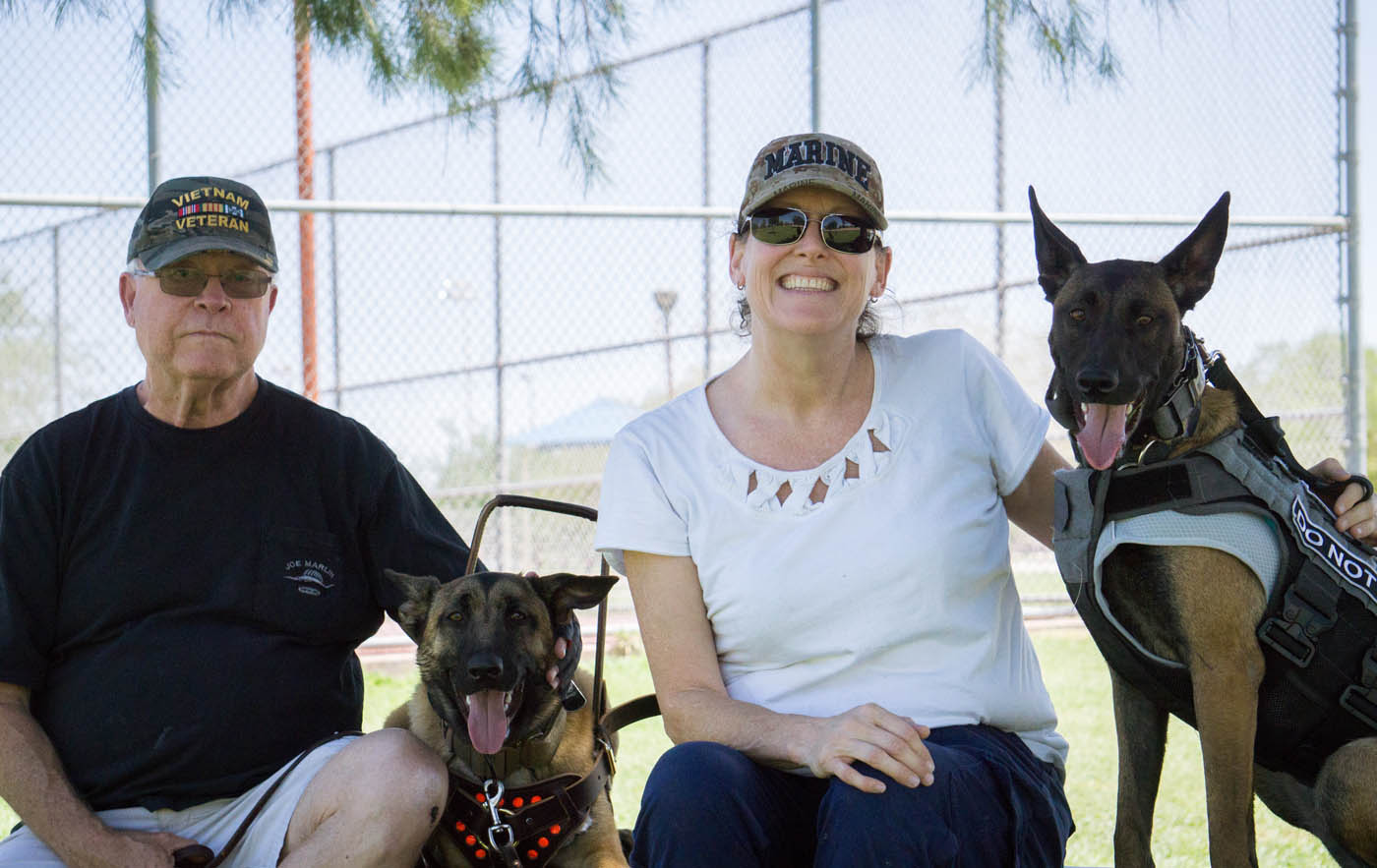
Benefits of PTSD Service Dog Training
- Increase activity and integration into society: Dogs are active and need to be exercised regularly, the responsibility of caring for a service animal will force their handler to get out and exercise. A routine is established and ties to the future are forged again.
- Create a sense of safety: Public settings and crowds are an enormous trigger for most individuals suffering from PTSD. Psychiatric service dogs are trained to create a physical barrier between their handler and crowds of people.
- Ground in reality, redirect hyper-vigilance: Hyper-vigilance is a symptom of PTSD and creates constant tension and paranoia within suffers. Service dogs are trained to recognize their handler’s warning signs for anxiety, hyper-vigilance, and panic attacks and redirect that energy into positive coping skills and grounding techniques such as petting the dog.
- Reduce nightmares and flashbacks: One of the most emotionally challenging situations for individuals with PTSD to deal with are flashbacks and nightmares. They can transport an individual back to a terrifying time in their life where they have felt unsafe, threatened, and traumatized. A PTSD service animal is trained to bring their handler back to reality quickly and calmly, ground the individual, and help them to feel safe in their environment again.
Get Your Free Assessment
You and your canine companion really can have it all. See how easy it can be to become a member of the elite pup society by requesting a free consultation today!
Photo Gallery
See An Elite Dog in Action
Hear From Our Customers
Learn Why Dog owners choose Dog Training Elite
-
Diana RoblesOct. 4, 2025When we lost Luca, we weren’t sure what we would do. He was not only my service dog, but my partner and heart. I honestly didn’t know how I could move forward without him. At the time, our sweet Yara didn’t qualify as a service dog due to her past trauma, prior to us adopting her, and it felt like such an uncertain road ahead. Then life surprised us — Yara had a litter of seven beautiful, healthy standard poodle pups. We decided to keep two of the boys, and they have just completed their service dog training camp. They’re well on their way to following in Luca’s pawprints, and watching their progress has filled our hearts with so much hope. Yara herself has blossomed in ways I never imagined. From obedience training to slowly building her confidence, she’s now qualified as a service dog too. She’s done a complete 180, and it brings me to tears thinking of how far she’s come. Thank you, DTE, for everything. Your dedication, patience, and love have shaped not only our pups but our lives. We will always miss Luca deeply, but we’re forever grateful to Dog Training Elite for helping our young pups step into their new roles and for helping our beautiful princess Yara grow into the amazing dog she was meant to be. 🐩❤️
-
Gavin BromfieldSep. 16, 2025“Your dog is untrainable,” they said. “Your dog is a lost cause,” they said. Two and a half years ago, I was told this by a puppy training school where my German Shepherd, Shade, had been enrolled for a two-week course. I got Shade when he was ten weeks old, and he was an anxious pup from day one. I figured he’d grow out of it as he got older, but at six months old, a trip to the beach raised serious concerns. He didn’t tolerate strangers at all and made it abundantly clear to everyone—including those in neighboring zip codes. Even at six months, getting yelled at by a set of teeth attached to a life-support system was terrifying for the innocent. When I received the “lost cause” verdict, I was seriously bummed—sad, even. I also have two golden retrievers and love taking my fur faces with me whenever possible. Obviously, having an aggressive (now 110-pound) German Shepherd around strangers was out of the question, so I resigned myself to keeping Shade isolated—a bad day for both of us. Fast forward to a few months ago. On a whim, I asked AI whether there was any hope for a “lost cause” like mine. AI responded: Absolutely. There’s almost no such thing as a “lost cause” dog—only those that might need a different approach, more patience, and dedication. That sparked hope! I asked AI to recommend good trainers in my area, preferably experienced with anxious Shepherds. Dog Training Elite was the top suggestion, so I called for a second opinion. Whitley from Dog Training Elite visited within a few days to meet Shade, who, of course, greeted her by yelling and showing off his pointy pearly whites. Whitley echoed AI’s sentiment: He needs work, but he’ll be just fine. I committed to their program on the spot. The trainer assigned to me, Evey, came to my home every Friday for eight weeks to train Shade—or so I thought. I quickly realized Evey was training me. To be fair, I needed it more than Shade did. The sessions covered new commands, how to elicit desired behavior, what to do and avoid, body language, and more. It was an awesome learning experience. Each week, we received homework to practice for 20-30 minutes daily, and I was impressed by how quickly Shade progressed. The before-and-after, even within the first week, still seems unbelievable. Turns out my “best boi” is also a “smart boi.” I was thrilled to see Shade steadily tolerate Evey (no more toothy yelling) and, more importantly, start taking cues from me instead of taking matters into his own paws. This helped me realize my nervousness about him around strangers was being picked up by him and expressed as aggression. The more confident I became, the more he deferred his emotional responses to me. Evey helped break negative feedback loops and build positive ones—a good time to mention that Evey is an absolute rock star. Our final lesson was a milestone: an outing to Home Depot. I was a bit apprehensive leading up to it but confident on the day that Shade would ace his graduation. Spoiler alert: He did. He never once yelled or looked like he wanted to ventilate anyone. That Sunday, Shade and I celebrated with a burger at a local dog-friendly restaurant. He was interested and attentive to the goings-on but impeccably well-behaved. My boy! To Dog Training Elite: I am ecstatic about the results you’ve helped me achieve. Thank you! Worth every single penny. To Whitley: Thank you for being straightforward and inspiring confidence in my “lost cause.” To Evey: You rock. I appreciate your help and guidance immensely. To everyone else: If you need help training your best friend, give Dog Training Elite a call, you won’t be disappointed.
-
Sandra BaezJul. 31, 2025I am so grateful I took my stubborn giant schnauzer to Dog Training Elite. I enjoy walking him without being constantly pulled. Thank you very much for such an excellent job. I highly recommend it.
-
Cynthia CabazaJul. 31, 2025Dog Training Elite has been a lifesaver! After trying two other trainers with my Aussie, Blue Ghost, I finally found the help we needed. Blue is smart but strong-willed and used to pull so hard on walks that I was scared to take him out. What makes Elite different is they didn’t just train my dog—they trained me, too. They offer follow-up classes, support, and real tools that work. Blue is now in their Service Dog program and doing great. We’re finally able to enjoy him as part of the family. I highly recommend Dog Training Elite—best decision I’ve made! —Cynthia C.
-
Wendy LambertJul. 31, 2025This place and the dog trainers here are EXCELLENT! We have a completely different dog lol. We had our standard poodle do the service dog training for one of my kids. He came home the first day already knowing different commands. I love that you receive report cards, videos, and pictures throughout the day. I highly recommend Dog Training Elite
-
Amber FlippoJul. 31, 2025We’re so grateful to have found Dog Training Elite for our spicy schnauzer, Stella. Their in-depth knowledge and steady guidance has helped her become confident in her abilities and shape her into an amazing dog. We will continue to train with them! Thank you to the amazing crew at Dog Training Elite!
-
Stephen MayJul. 31, 2025I can't thank Dog Training Elite enough for the incredible work they have done over the previous two years in helping me train my service dog. From the very beginning, they demonstrated not only deep knowledge and professionalism, but also a genuine passion for dogs and a compassionate understanding of my unique needs. Their training approach was structured, patient, and tailored specifically to my situation. They helped me build a strong foundation with my dog and patiently guided both my dog and I through each phase…from basic obedience to more complex service tasks…with the kind of compassionate clarity both my dog and I needed. My dog is now confident, well-mannered, and fully capable of supporting me thanks to their guidance. What I appreciated most was how supportive and empowering Dog Training Elite was throughout the process. They didn’t just train my dog…they trained me to be a more capable, confident handler. I now have not just a highly skilled service dog, but a deeper bond with my companion than I ever imagined possible. If you're looking for a trainer who truly cares and gets real results, I highly recommend Dog Training Elite. They’ve made a life-changing difference in mine.
-
Karmen TJul. 31, 2025I am happy with the knowledge and experience so far and appreciate the opportunity to have a trainer who is open to listening as well as teaching. Millie has been in our family less than a year and shows progress with the training program. We are excited to see her grow and improve over the years.
-
Noha D'AndreaJul. 31, 2025We had a fantastic experience with Dog Training Elite! The team was incredibly knowledgeable, friendly, and responsive every step of the way. Thanks to their guidance and support, our dog with his training and officially becoming a certified service dog. The trainers care about both the dogs and their people, and it shows in how they communicate and tailor the program to meet individual needs. Highly recommend to anyone looking for professional, compassionate training—especially if you're on the path to service dog certification.
-
Simba AliJul. 31, 2025Great training, and its all practical. A+ service.
-
Ramona SchwartzJul. 31, 2025Dog Training Elite is the best!!! They not only hold training camps but offer lifetime assistance to keep you and your dogs skills up. Best decision ever
-
Gabriela BarbaNov. 9, 2023Great people, great training, great culture!
-
Kristen L. MatulisJul. 21, 2025My boyfriend & I recently started working with Dog Training Elite San Antonio, and it has been a great experience so far! :-) Our initial meeting was with Whitley, who sold us on the Platinum package (which includes 8 in-home dog training session + lifetime training support). DTE offer a military/first responder discount, which was a great selling point for us as well when we signed up! Evey, who began working with us as our in-home trainer, has been SO fantastic with our English Bulldog thus far. I'm very grateful that we found Dog Training Elite San Antonio! Looking forward to continuing our in-home sessions + adding in group sessions as our family continues on with them!!
-
Nuvia CalderonJul. 16, 2025Would definitely recommend them. They did a great job with training my Aussie puppy. He is now almost a year old and he is doing great. Thank you so much.
-
Michael HimoffJun. 5, 2025We were hesitant on having our collie trained using Elite's methods. I must admit that after one week our Remi was jumping in and out of our SUV, sitting, laying down, and wallking next to us on our left side. Elite did a fantastic job which has made our lives much easier. We are thankful to have put our trust in Elite Training.
-
Krista LMay. 31, 2025I recently adopted my first forever puppy and knew right away that I wanted to get him professionally trained. After some searching, I found this school and scheduled a visit. The moment I walked in and met Tammy, I was immediately impressed. There were about 7 or 8 dogs practicing the “place” command—and they were like statues! Not a single one reacted as we entered. We were able to start training that following Monday. At first, Nibbler was a bit hesitant, but by the third day, he was practically leaping into the trainers’ arms. He learned so much in such a short time, and I couldn’t be prouder of him. I’m so excited for our future training sessions!
-
Kellie ThompsonApr. 21, 2025Max just graduated from his in home training with Dog Training Elite and I can’t say enough great things about the process! We adopted him from a rescue about 6 months ago and he was extremely anxious and a little unruly. Adakais has been amazing. Max is now much more confident and knows all of his commands . The ability to learn the training techniques from Adakais each week and then work on them one on one with Max has been such a rewarding experience. We look forward to continuing to work with DTE by attending the group classes.
-
Keisha SpauldingMar. 21, 2025There are so many great things about Dog Training Elite. I’ll start with their level of professionalism. From the first introduction Tammy explained their training opportunities and payment options. Whitley used her own dog to show me some things the team would be able to teach my dog to support my Post Traumatic Stress and anxiety. The team is always kind and they listen to my needs as a handler. My standard poodle, Brody, completed puppy camp and is currently in big dog camp for service. After puppy camp there were follow up classes in our home at which time we got some much needed refresher training. Terrence and Adakais arrived promptly and were very knowledgeable. Alli is his classroom trainer (for puppy camp and big dog camp) and she is amazing. She answers my questions and supports me as a handler with any areas that I need additional assistance. She is always watching me with Brody when I’m there and I love that she corrects me when she sees me do something wrong. It keeps me on point and I am always learning from her. Brody learned some great things in his first week of big dog camp. He even got a compliment from one of my co-workers who noticed his behavior had improved since he saw him a week ago. The end of day report cards are wonderful. It gives me something to reference if I am unsure about something Brody was taught throughout his training. One of the things I appreciate most is the quick response I get from any messages I send them. You cannot go wrong with Dog Training Elite. They are a professional group of people who want to see you and your dog be successful. I am looking forward to a lifelong relationship with this staff.
-
Glori TateMar. 18, 2025Most amazing experience I have ever had. I was very nervous about bringing my tiny 1.5 lb baby to be trained. I had a sit down with Tammy and she went through the process with me. Had me bring my baby with me and she gave me a tour. From day one it was amazing. Poppy started puppy camp the next Monday and they worked with me on my work schedule. I was more nervous than my puppy. After the first day my little dog was so happy to go. Every time I drove up she knew. She got so excited she would rush through the doors and run right to the trainers. She has her favorites of course. But, she was just so happy to be there. Not only was she learning and playing. But everyday they made video of what she was learning and I would take the video and practice at home what she was learning there. If I had questions I could ask Ally her trainer anything and she was amazing to answer all my questions. When Puppy camp ended we moved on to more advanced training. We had to wait for a little bit for her little puppy brain to grow. During that time the trainers came to us. We had Kai and he was absolutely the best. Full of knowledge and very patient and professional like Ally. Poppy just loved him. Working with him outside of the training facility was easy and very rewarding for both myself and Poppy. He even help us with boundaries within the house. When it was time to start the more Advanced training. We had Ally again. Poppy learned so much. She became more confident and so did I. If I stumbled with anything, Ally guided me back on track and always let me know that I can ask for help at anytime. She never made me feel rushed through any of it. Then of course there are the videos they use to help you through the training of your dog. I know this review is long. I did see some of the other reviews posted that were negative and if you know these people and how they love their dogs and yours. You would understand that what was said was taken out of context. One of the service dog training methods is for your dog to be in place. Poppy knowing this skill means I can handle my medical needs and know she is out of harms way and or not getting her self into trouble. So when you walk into the facility you might see a dog on a bed off the ground against the wall sitting. They are not stuck in a cage. They are out in the open. But they are in what is called place. It is a very important skill. I am very blessed Poppy was taught this. It has come in handy in so many situations. Not only at home. But also out at a hospital where she needs to be safe out of the way. If you’re looking for a place that loves your dog, that will be there to answer your questions, to guide you and your dog through the journey you choose. This is the place. These are the people. I trust my little Poppy 110% with all of them.
-
James SwigartMar. 15, 2025Excellent professional staff.
-
Diana RoblesOct. 4, 2025When we lost Luca, we weren’t sure what we would do. He was not only my service dog, but my partner and heart. I honestly didn’t know how I could move forward without him. At the time, our sweet Yara didn’t qualify as a service dog due to her past trauma, prior to us adopting her, and it felt like such an uncertain road ahead. Then life surprised us — Yara had a litter of seven beautiful, healthy standard poodle pups. We decided to keep two of the boys, and they have just completed their service dog training camp. They’re well on their way to following in Luca’s pawprints, and watching their progress has filled our hearts with so much hope. Yara herself has blossomed in ways I never imagined. From obedience training to slowly building her confidence, she’s now qualified as a service dog too. She’s done a complete 180, and it brings me to tears thinking of how far she’s come. Thank you, DTE, for everything. Your dedication, patience, and love have shaped not only our pups but our lives. We will always miss Luca deeply, but we’re forever grateful to Dog Training Elite for helping our young pups step into their new roles and for helping our beautiful princess Yara grow into the amazing dog she was meant to be. 🐩❤️
-
Gavin BromfieldSep. 16, 2025“Your dog is untrainable,” they said. “Your dog is a lost cause,” they said. Two and a half years ago, I was told this by a puppy training school where my German Shepherd, Shade, had been enrolled for a two-week course. I got Shade when he was ten weeks old, and he was an anxious pup from day one. I figured he’d grow out of it as he got older, but at six months old, a trip to the beach raised serious concerns. He didn’t tolerate strangers at all and made it abundantly clear to everyone—including those in neighboring zip codes. Even at six months, getting yelled at by a set of teeth attached to a life-support system was terrifying for the innocent. When I received the “lost cause” verdict, I was seriously bummed—sad, even. I also have two golden retrievers and love taking my fur faces with me whenever possible. Obviously, having an aggressive (now 110-pound) German Shepherd around strangers was out of the question, so I resigned myself to keeping Shade isolated—a bad day for both of us. Fast forward to a few months ago. On a whim, I asked AI whether there was any hope for a “lost cause” like mine. AI responded: Absolutely. There’s almost no such thing as a “lost cause” dog—only those that might need a different approach, more patience, and dedication. That sparked hope! I asked AI to recommend good trainers in my area, preferably experienced with anxious Shepherds. Dog Training Elite was the top suggestion, so I called for a second opinion. Whitley from Dog Training Elite visited within a few days to meet Shade, who, of course, greeted her by yelling and showing off his pointy pearly whites. Whitley echoed AI’s sentiment: He needs work, but he’ll be just fine. I committed to their program on the spot. The trainer assigned to me, Evey, came to my home every Friday for eight weeks to train Shade—or so I thought. I quickly realized Evey was training me. To be fair, I needed it more than Shade did. The sessions covered new commands, how to elicit desired behavior, what to do and avoid, body language, and more. It was an awesome learning experience. Each week, we received homework to practice for 20-30 minutes daily, and I was impressed by how quickly Shade progressed. The before-and-after, even within the first week, still seems unbelievable. Turns out my “best boi” is also a “smart boi.” I was thrilled to see Shade steadily tolerate Evey (no more toothy yelling) and, more importantly, start taking cues from me instead of taking matters into his own paws. This helped me realize my nervousness about him around strangers was being picked up by him and expressed as aggression. The more confident I became, the more he deferred his emotional responses to me. Evey helped break negative feedback loops and build positive ones—a good time to mention that Evey is an absolute rock star. Our final lesson was a milestone: an outing to Home Depot. I was a bit apprehensive leading up to it but confident on the day that Shade would ace his graduation. Spoiler alert: He did. He never once yelled or looked like he wanted to ventilate anyone. That Sunday, Shade and I celebrated with a burger at a local dog-friendly restaurant. He was interested and attentive to the goings-on but impeccably well-behaved. My boy! To Dog Training Elite: I am ecstatic about the results you’ve helped me achieve. Thank you! Worth every single penny. To Whitley: Thank you for being straightforward and inspiring confidence in my “lost cause.” To Evey: You rock. I appreciate your help and guidance immensely. To everyone else: If you need help training your best friend, give Dog Training Elite a call, you won’t be disappointed.
-
Sandra BaezJul. 31, 2025I am so grateful I took my stubborn giant schnauzer to Dog Training Elite. I enjoy walking him without being constantly pulled. Thank you very much for such an excellent job. I highly recommend it.
-
Cynthia CabazaJul. 31, 2025Dog Training Elite has been a lifesaver! After trying two other trainers with my Aussie, Blue Ghost, I finally found the help we needed. Blue is smart but strong-willed and used to pull so hard on walks that I was scared to take him out. What makes Elite different is they didn’t just train my dog—they trained me, too. They offer follow-up classes, support, and real tools that work. Blue is now in their Service Dog program and doing great. We’re finally able to enjoy him as part of the family. I highly recommend Dog Training Elite—best decision I’ve made! —Cynthia C.
-
Wendy LambertJul. 31, 2025This place and the dog trainers here are EXCELLENT! We have a completely different dog lol. We had our standard poodle do the service dog training for one of my kids. He came home the first day already knowing different commands. I love that you receive report cards, videos, and pictures throughout the day. I highly recommend Dog Training Elite
-
Amber FlippoJul. 31, 2025We’re so grateful to have found Dog Training Elite for our spicy schnauzer, Stella. Their in-depth knowledge and steady guidance has helped her become confident in her abilities and shape her into an amazing dog. We will continue to train with them! Thank you to the amazing crew at Dog Training Elite!
-
Stephen MayJul. 31, 2025I can't thank Dog Training Elite enough for the incredible work they have done over the previous two years in helping me train my service dog. From the very beginning, they demonstrated not only deep knowledge and professionalism, but also a genuine passion for dogs and a compassionate understanding of my unique needs. Their training approach was structured, patient, and tailored specifically to my situation. They helped me build a strong foundation with my dog and patiently guided both my dog and I through each phase…from basic obedience to more complex service tasks…with the kind of compassionate clarity both my dog and I needed. My dog is now confident, well-mannered, and fully capable of supporting me thanks to their guidance. What I appreciated most was how supportive and empowering Dog Training Elite was throughout the process. They didn’t just train my dog…they trained me to be a more capable, confident handler. I now have not just a highly skilled service dog, but a deeper bond with my companion than I ever imagined possible. If you're looking for a trainer who truly cares and gets real results, I highly recommend Dog Training Elite. They’ve made a life-changing difference in mine.
-
Karmen TJul. 31, 2025I am happy with the knowledge and experience so far and appreciate the opportunity to have a trainer who is open to listening as well as teaching. Millie has been in our family less than a year and shows progress with the training program. We are excited to see her grow and improve over the years.
-
Noha D'AndreaJul. 31, 2025We had a fantastic experience with Dog Training Elite! The team was incredibly knowledgeable, friendly, and responsive every step of the way. Thanks to their guidance and support, our dog with his training and officially becoming a certified service dog. The trainers care about both the dogs and their people, and it shows in how they communicate and tailor the program to meet individual needs. Highly recommend to anyone looking for professional, compassionate training—especially if you're on the path to service dog certification.
-
Simba AliJul. 31, 2025Great training, and its all practical. A+ service.
-
Ramona SchwartzJul. 31, 2025Dog Training Elite is the best!!! They not only hold training camps but offer lifetime assistance to keep you and your dogs skills up. Best decision ever
-
Gabriela BarbaNov. 9, 2023Great people, great training, great culture!
-
Kristen L. MatulisJul. 21, 2025My boyfriend & I recently started working with Dog Training Elite San Antonio, and it has been a great experience so far! :-) Our initial meeting was with Whitley, who sold us on the Platinum package (which includes 8 in-home dog training session + lifetime training support). DTE offer a military/first responder discount, which was a great selling point for us as well when we signed up! Evey, who began working with us as our in-home trainer, has been SO fantastic with our English Bulldog thus far. I'm very grateful that we found Dog Training Elite San Antonio! Looking forward to continuing our in-home sessions + adding in group sessions as our family continues on with them!!
-
Nuvia CalderonJul. 16, 2025Would definitely recommend them. They did a great job with training my Aussie puppy. He is now almost a year old and he is doing great. Thank you so much.
-
Michael HimoffJun. 5, 2025We were hesitant on having our collie trained using Elite's methods. I must admit that after one week our Remi was jumping in and out of our SUV, sitting, laying down, and wallking next to us on our left side. Elite did a fantastic job which has made our lives much easier. We are thankful to have put our trust in Elite Training.
-
Krista LMay. 31, 2025I recently adopted my first forever puppy and knew right away that I wanted to get him professionally trained. After some searching, I found this school and scheduled a visit. The moment I walked in and met Tammy, I was immediately impressed. There were about 7 or 8 dogs practicing the “place” command—and they were like statues! Not a single one reacted as we entered. We were able to start training that following Monday. At first, Nibbler was a bit hesitant, but by the third day, he was practically leaping into the trainers’ arms. He learned so much in such a short time, and I couldn’t be prouder of him. I’m so excited for our future training sessions!
-
Kellie ThompsonApr. 21, 2025Max just graduated from his in home training with Dog Training Elite and I can’t say enough great things about the process! We adopted him from a rescue about 6 months ago and he was extremely anxious and a little unruly. Adakais has been amazing. Max is now much more confident and knows all of his commands . The ability to learn the training techniques from Adakais each week and then work on them one on one with Max has been such a rewarding experience. We look forward to continuing to work with DTE by attending the group classes.
-
Keisha SpauldingMar. 21, 2025There are so many great things about Dog Training Elite. I’ll start with their level of professionalism. From the first introduction Tammy explained their training opportunities and payment options. Whitley used her own dog to show me some things the team would be able to teach my dog to support my Post Traumatic Stress and anxiety. The team is always kind and they listen to my needs as a handler. My standard poodle, Brody, completed puppy camp and is currently in big dog camp for service. After puppy camp there were follow up classes in our home at which time we got some much needed refresher training. Terrence and Adakais arrived promptly and were very knowledgeable. Alli is his classroom trainer (for puppy camp and big dog camp) and she is amazing. She answers my questions and supports me as a handler with any areas that I need additional assistance. She is always watching me with Brody when I’m there and I love that she corrects me when she sees me do something wrong. It keeps me on point and I am always learning from her. Brody learned some great things in his first week of big dog camp. He even got a compliment from one of my co-workers who noticed his behavior had improved since he saw him a week ago. The end of day report cards are wonderful. It gives me something to reference if I am unsure about something Brody was taught throughout his training. One of the things I appreciate most is the quick response I get from any messages I send them. You cannot go wrong with Dog Training Elite. They are a professional group of people who want to see you and your dog be successful. I am looking forward to a lifelong relationship with this staff.
-
Glori TateMar. 18, 2025Most amazing experience I have ever had. I was very nervous about bringing my tiny 1.5 lb baby to be trained. I had a sit down with Tammy and she went through the process with me. Had me bring my baby with me and she gave me a tour. From day one it was amazing. Poppy started puppy camp the next Monday and they worked with me on my work schedule. I was more nervous than my puppy. After the first day my little dog was so happy to go. Every time I drove up she knew. She got so excited she would rush through the doors and run right to the trainers. She has her favorites of course. But, she was just so happy to be there. Not only was she learning and playing. But everyday they made video of what she was learning and I would take the video and practice at home what she was learning there. If I had questions I could ask Ally her trainer anything and she was amazing to answer all my questions. When Puppy camp ended we moved on to more advanced training. We had to wait for a little bit for her little puppy brain to grow. During that time the trainers came to us. We had Kai and he was absolutely the best. Full of knowledge and very patient and professional like Ally. Poppy just loved him. Working with him outside of the training facility was easy and very rewarding for both myself and Poppy. He even help us with boundaries within the house. When it was time to start the more Advanced training. We had Ally again. Poppy learned so much. She became more confident and so did I. If I stumbled with anything, Ally guided me back on track and always let me know that I can ask for help at anytime. She never made me feel rushed through any of it. Then of course there are the videos they use to help you through the training of your dog. I know this review is long. I did see some of the other reviews posted that were negative and if you know these people and how they love their dogs and yours. You would understand that what was said was taken out of context. One of the service dog training methods is for your dog to be in place. Poppy knowing this skill means I can handle my medical needs and know she is out of harms way and or not getting her self into trouble. So when you walk into the facility you might see a dog on a bed off the ground against the wall sitting. They are not stuck in a cage. They are out in the open. But they are in what is called place. It is a very important skill. I am very blessed Poppy was taught this. It has come in handy in so many situations. Not only at home. But also out at a hospital where she needs to be safe out of the way. If you’re looking for a place that loves your dog, that will be there to answer your questions, to guide you and your dog through the journey you choose. This is the place. These are the people. I trust my little Poppy 110% with all of them.
-
James SwigartMar. 15, 2025Excellent professional staff.
